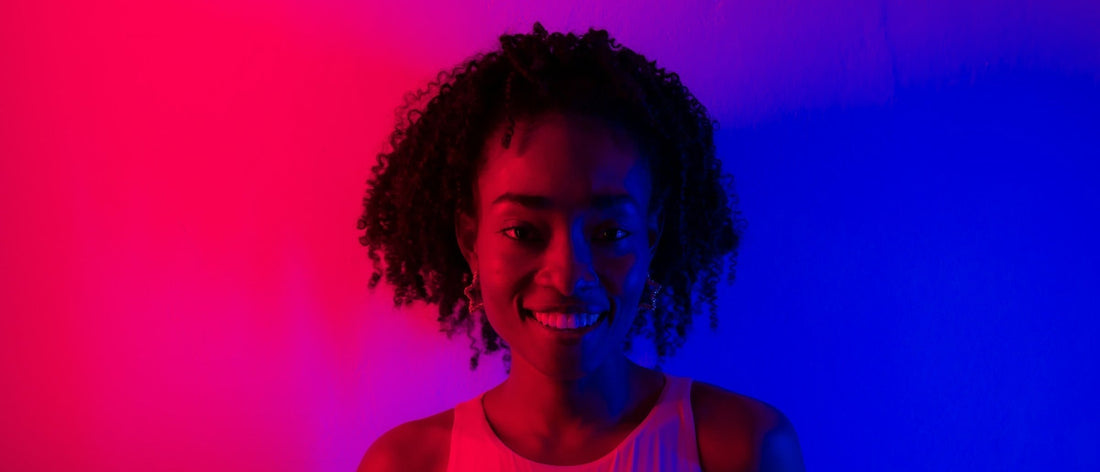Want to look objectively great in the colors you wear but also wear colors you love? There’s a wealth of knowledge about seasonal color analysis on the internet, and at Mae Threads, we have clothes for every color season! But what is missing is how to combine the science of color theory, the art of color analysis, and your personal preferences to create the effect you want with your makeup and clothing. So let’s talk about how to do that.
Here is your secret code for 10% off the items in this article: color10
(PS, if you’re new to seasonal color analysis, this excellent blog post is a great place to start.)
The Hype and the Confusion
Color analysis posts have been everywhere on social media for the past couple of years. I got into it like everybody else, and then I got really into it. I read the Reddit forums, forced my friends to send well-lit pictures of themselves to me so I could digitally drape them, and started assessing the coloring of people I’d see at the grocery store.
But after a while, all of it started to seem so futile. I’ve seen one too many posts where, for example, half of the commenters think Zooey Deschanel looks soft and smokey and the other half think she looks bright and bold. Those descriptors are complete opposites—how can people see colors and beauty so differently?
Do you see how these background colors affect Zooey in different ways?
What Color Analysis Gets Right
The theory of color analysis is that the colors that look best on us are the colors that match our natural coloring in warmth, brightness, and depth and/or contrast. And I think that’s true to a certain extent.
For example, Lupita Nyong’o looked unforgettably radiant in this light blue dress, which matches her natural coolness and brightness. And Rihanna looked dreamy in this sage green ensemble, which matches her natural softness and neutrality between cool and warm.
Another benefit of color analysis is that having a color palette to pull from makes shopping faster and dressing easier. Ever grabbed a trendy top in-store only to realize it clashes with everything you own? A palette helps you avoid that. (PS, we have Pinterest boards where we break our products into the different color seasons. Check it out!)
What Color Analysis Gets Wrong
The problem is that all of this is subjective. Cultural influences, personal biases, lighting, and even mood can change perception of what looks good.
Like me in a warm beige. Beige isn’t in my palette. It’s supposed to make me look sallow, and it kind of does. But it also brings out the warmth in my hair—and who’s to say that’s not an effect I might want to create?
How to Use Color Analysis to Your Advantage
I say, instead of chasing the “perfect” palette, think about the effect you want to create. Here are some ideas for leveraging your seasonal color palette to create the effect you want.
If you want to evoke a certain mood or references, use a combination of your seasonal colors and colors from a muse of your choice. Love the warm, dusty 70s aesthetic but look best in cool, bright colors? Find a balance—lean into winter’s gentlest blues and teals, then layer in rust or tan for the vintage vibe. (Similar to our dresses here and here)
If you want to draw attention to or away from certain features, use color theory to your advantage. For example, if you’re a warm autumn, you may notice that yellow hues give you a golden glow while blue-based hues enhance the redness of your nose. In that case, you may choose to stick to your autumn palette (like this olive colored set) on no-makeup days and then branch out into your favorite cooler colors when you’re all dolled up.
If you want to create a little drama and contrast, pull colors from the palette opposite of yours. Maybe you’re fair and blonde—a light spring. You can wear blacks and the deep grays of the deep winter palette to create a dramatic effect you love! On the flip side, if you’re a deep autumn, try icy blue (like our Robin Dress) or blush pink for an unexpected combination with your naturally warm, dark coloring.
While it may seem like it from the posts you see on Instagram and TikTok, color analysis isn’t about “right” and “wrong” colors—it’s a tool for understanding how colors interact with you. My goal isn’t to follow rules but to use color intentionally to create the effect I want, and I hope that’s what you’ll do too. It makes getting dressed so much more joyful!
So next time you’re shopping, instead of asking “Is this my season?” ask “What effect does this create?” and choose the pieces that fit your goals. And check our Pinterest boards for inspiration!

